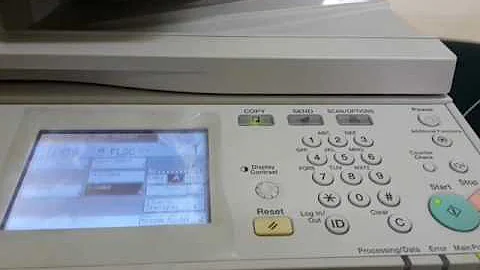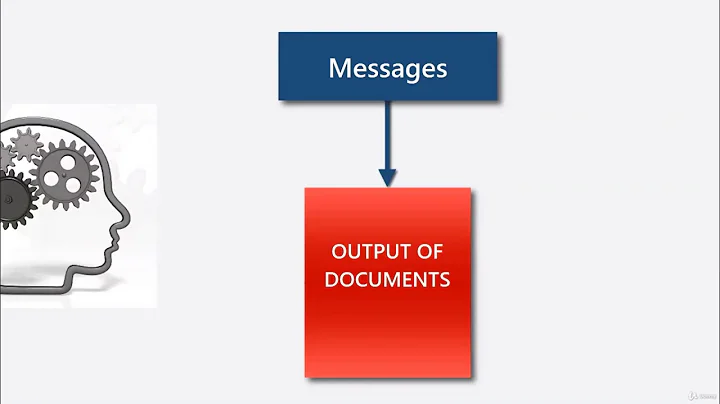How can I print when using %dopar%
Solution 1
There are a number of good solutions posted here, but I find it easiest to log to a socket and use a separate process to output the log calls in a console.
I use the following function:
log.socket <- make.socket(port=4000)
Log <- function(text, ...) {
msg <- sprintf(paste0(as.character(Sys.time()), ": ", text, "\n"), ...)
cat(msg)
write.socket(log.socket, msg)
}
You can then place log statements in the code such as:
Log("Processing block %d of %d", i, n.blocks)
Log output can viewed in real-time using any simple socket listening tool. For example, using netcat on Linux:
nc -l 4000
The above log statement would display in the netcat terminal as:
2014-06-25 12:30:45: Processing block 2 of 13
This method has the advantage of working remotely and provides as detailed output as you care to log.
p.s. For those on Windows, see Jon Craton's netcat port.
p.p.s I'm guessing the write.socket R function probably isn't thread-safe, but unless you're logging at high frequency, you're unlikely to run into any issue. Something to be aware of though.
Solution 2
Output produced by the snow workers gets thrown away by default, but you can use the makeCluster "outfile" option to change that. Setting outfile to the empty string ("") will prevent snow from redirecting the output, often resulting in the output from your print messages showing up on the terminal of the master process.
Just create and register your cluster with something like:
library(doSNOW)
cl <- makeCluster(4, outfile="")
registerDoSNOW(cl)
Your foreach loop doesn't need to change at all.
This works for me with both SOCK clusters and MPI clusters using Rmpi built with Open MPI. On Windows, you won't see any output if you're using Rgui. If you use Rterm.exe instead, you will.
Note that in addition to your own output, you'll see messages produced by snow which can also be useful.
To use a progress bar, doSNOW version 1.0.14 has a progress option. Here is a complete example:
library(doSNOW)
library(tcltk)
library(randomForest)
cl <- makeSOCKcluster(3)
registerDoSNOW(cl)
ntasks <- 100
pb <- tkProgressBar(max=ntasks)
progress <- function(n) setTkProgressBar(pb, n)
opts <- list(progress=progress)
x <- matrix(runif(500), 100)
y <- gl(2, 50)
rf <- foreach(ntree=rep(25, ntasks), .combine=combine,
.multicombine=TRUE, .packages='randomForest',
.options.snow=opts) %dopar% {
randomForest(x, y, ntree=ntree)
}
The progress option is fairly general, so you could simply print a message using a function such as:
progress <- function(n) cat(sprintf("task %d is complete\n", n))
The function can take 0, 1, or 2 arguments. The first supplied argument is the total number of completed tasks, and the second is the task number of the task that just finished.
The simplest example simply prints a . when a task completes:
progress <- function() cat('.')
This example displays both arguments and can be used to demonstrate that tasks aren't always completed in order:
progress <- function(nfin, tag) {
cat(sprintf('tasks completed: %d; tag: %d\n', nfin, tag))
}
Solution 3
A way I've kept track of progress on nodes during long operations is to create a progress bar using tkProgressBar from the tcltk package. It's not quite what you asked for, but it should let you see something from the nodes. At least it does when the cluster is a socket cluster running on the local host (which is a Windows machine). The potential problem is that the progress bar either remains and clutters your monitor or it gets closed and the printed info is gone. For me, that wasn't a problem, though, since I just wanted to know what the current status was.
library(parallel)
library(doSNOW)
cl<-makeCluster(detectCores(),type="SOCK")
registerDoSNOW(cl)
Using your code,
foreach(ntree=rep(25,2),.combine=combine,.packages=c('randomForest','tcltk'),
.inorder=FALSE) %dopar% {
mypb <- tkProgressBar(title = "R progress bar", label = "",
min = 0, max = 1, initial = 0, width = 300)
setTkProgressBar(mypb, 1, title = "RANDOM FOREST", label = NULL)
ans <- randomForest(classForm,data=data,na.action=na.action,do.trace=do.trace,ntree=ntree,mtry=mtry)
close(mypb)
ans
}
Here's a more general use example:
jSeq <- seq_len(30)
foreach(i = seq_len(2), .packages = c('tcltk', 'foreach')) %dopar% {
mypb <- tkProgressBar(title = "R progress bar", label = "",
min = 0, max = max(jSeq), initial = 0, width = 300)
foreach(j = jSeq) %do% {
Sys.sleep(.1)
setTkProgressBar(mypb, j, title = "RANDOM FOREST", label = NULL)
}
NULL
}
Solution 4
I had the same issue too. I was tuning parameters for random forest using foreach package and wanted to print a "Results" line after each iteration, but couldn't figure out without going through displaying a progress bar and such.
Here's what I did, In my function, I added this line
write.table(result, file=paste("RF_ntree_",ntree,"_dims_",dims,".txt", sep=""),
sep="\t", row.names=F)
So after every iteration, the results are written to a text file with names such as RF_ntree_250_dims_100.txt.
So if I want to keep track of the progress I just refresh the folder to which the text files are being written to.
PS: the results are being accumulated in a data frame too.
Solution 5
cat("blah-blah-blah\n", file=stdout()) tends to work for me (linux/emacs/ess). I guess it also works for some other platforms.
Related videos on Youtube
n8schloss
Updated on July 05, 2022Comments
-
 n8schloss almost 2 years
n8schloss almost 2 yearsI have a
foreachloop that uses%dopar%withdoSNOWas the back-end. How can I have the loop print something out each iteration?My code below is what I'm currently using, but its not printing anything.
foreach(ntree=rep(25,2),.combine=combine,.packages='randomForest', .inorder=FALSE) %dopar% { print("RANDOM FOREST") randomForest(classForm,data=data,na.action=na.action,do.trace=do.trace,ntree=ntree,mtry=mtry) }-
Joshua Ulrich almost 12 yearsah, but it is printing, just not on the master node...
-
 n8schloss almost 12 yearsoh, okay. In that case is there a way that I can view what its printing or have it print to the master node?
n8schloss almost 12 yearsoh, okay. In that case is there a way that I can view what its printing or have it print to the master node? -
Joshua Ulrich almost 12 yearsI don't know of any and I'm not sure how it could be done.
-
Noam Ross almost 11 yearsWould it be possible to write an iterator function that prints to the console? The iterator should be run by the master, no?
-
Steve Weston over 10 years@NoamRoss Yes, the iterator runs only on the master, so it could write to the console. That would allow you to monitor tasks being sent to the workers, rather than when the tasks are actually executed by the workers.
-
-
user88595 about 10 yearsHi, I tried using the progress bar but can't make it work using parallel for loops. Everytime I run it I get "XIO: fatal IO error". How do you go around this? @BenBarnes
-
BenBarnes about 10 years@TAllieri, please see the updated example (the original example wasn't very illustrative). If you are still having problems, please provide more information and consider asking a new question.
-
 Matt SM over 8 yearsIs there an equivalent solutions for directing the output of print messages to the console with
Matt SM over 8 yearsIs there an equivalent solutions for directing the output of print messages to the console withdoMC? -
Steve Weston over 8 years@MattSM With doMC, output from the workers is displayed on the console by default when using standard R. You may run into problems when using RStudio, but I don't think that doMC is recommended when using RStudio due to problems with forking. Also, doMC doesn't support a progress bar due to restrictions in the parallel package.
-
horaceT over 6 years@SteveWeston I like the progress bar solution. But there are times when I want to see snippets of the result in each iteration. Is there any way to do the equivalent of cat("result at iter i") ?
-
Steve Weston over 6 years@horaceT If you're using a parallel backend that calls the combine function on the fly (such as doSNOW or doMPI), then you can easily display result snippets from the combine function. But keep in mind that the combine function is only called for every 100th result unless you decrease the value of
.maxcombine. -
horaceT over 6 years@SteveWeston First time it happens to me : when i google
.options.snow, i see absolutely no documentation, except this SO thread of yours. Can you explain what's going on under the hood. Where isprogressgettingnfrom? -
Steve Weston about 6 years@horaceT I thought I wrote some more, but apparently this is it. The function
doSNOWin the file "doSNOW.R" in the doSNOW source distribution sends tasks to the workers and collects the results. If a progress function is specified, it will call that function when a result arrives with up to two arguments. See my updated answer for more information. -
horaceT about 6 years@SteveWeston Very useful. One last Q, what is, and how to use the 3rd argument in
prorgress? -
horaceT about 6 yearsAny idea what's the hit on performance? ie. the additional processing time in file IO.
-
 Ott Toomet about 6 yearsNo. But you can test it. I have only used this for relatively slow tasks.
Ott Toomet about 6 yearsNo. But you can test it. I have only used this for relatively slow tasks. -
horaceT about 6 yearsNeed to run
nc -l 4000in linux terminal before executinglog.sock = make.socket(port=4000)inR -
Steve Weston about 6 years@horaceT There is no third argument. The function takes a maximum of 2 arguments.
-
Sid about 6 yearsOddly this logs if you tail the
outfilethat you specified onmakeCluster. Which makes me wonder what print is doing differently than this. -
cloudscomputes over 4 yearsI didn't see any print out in the rstudio console, it may print to the outfile set in the makeCluster,though
-
cloudscomputes over 4 yearsOK, But when you have like 10 different process, how can you record them properly? Establish a nc server and R socket for each R process? Or just make the R socket in different process connected to the same nc server?
-
allanvc almost 4 yearsThe
cl <- makeCluster(3, outfile="")tip works withdoParallel::registerDoParallel(cl)too.








